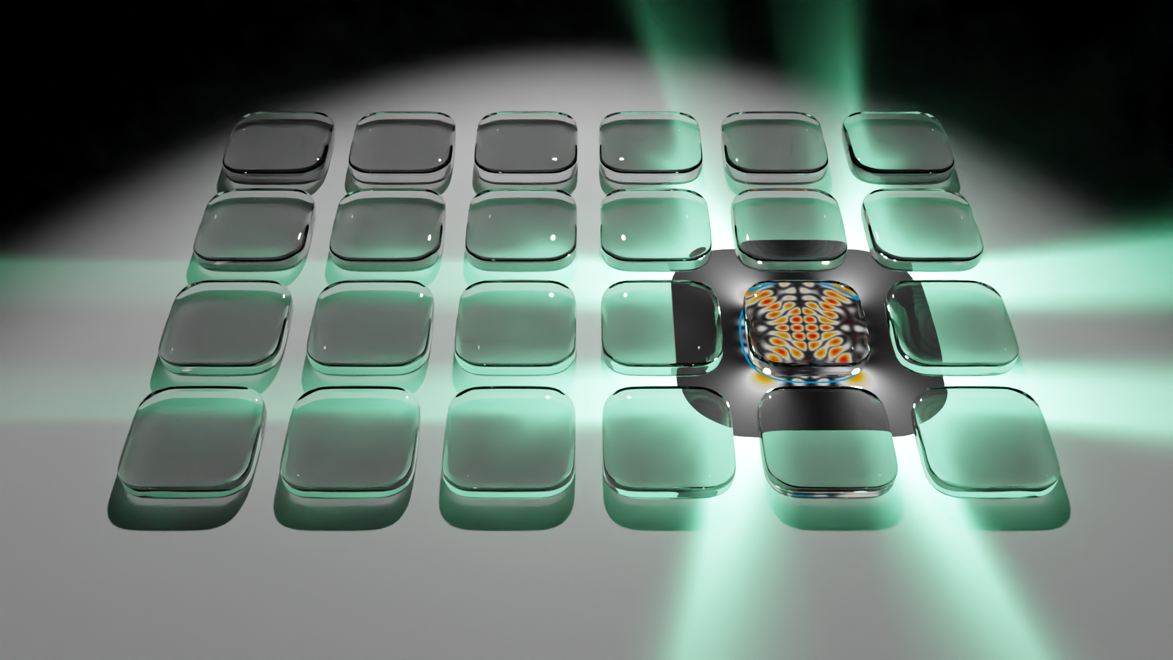주메뉴
- About IBS 연구원소개
-
Research Centers
연구단소개
- Research Outcomes
- Mathematics
- Physics
- Center for Underground Physics
- Center for Theoretical Physics of the Universe (Particle Theory and Cosmology Group)
- Center for Theoretical Physics of the Universe (Cosmology, Gravity and Astroparticle Physics Group)
- Dark Matter Axion Group
- Center for Artificial Low Dimensional Electronic Systems
- Center for Theoretical Physics of Complex Systems
- Center for Quantum Nanoscience
- Center for Exotic Nuclear Studies
- Center for Van der Waals Quantum Solids
- Center for Relativistic Laser Science
- Chemistry
- Life Sciences
- Earth Science
- Interdisciplinary
- Center for Neuroscience Imaging Research (Neuro Technology Group)
- Center for Neuroscience Imaging Research (Cognitive and Computational Neuroscience Group)
- Center for Algorithmic and Robotized Synthesis
- Center for Genome Engineering
- Center for Nanomedicine
- Center for Biomolecular and Cellular Structure
- Center for 2D Quantum Heterostructures
- Center for Quantum Conversion Research
- Institutes
- Korea Virus Research Institute
- News Center 뉴스 센터
- Career 인재초빙
- Living in Korea IBS School-UST
- IBS School 윤리경영


주메뉴
- About IBS
-
Research Centers
- Research Outcomes
- Mathematics
- Physics
- Center for Underground Physics
- Center for Theoretical Physics of the Universe (Particle Theory and Cosmology Group)
- Center for Theoretical Physics of the Universe (Cosmology, Gravity and Astroparticle Physics Group)
- Dark Matter Axion Group
- Center for Artificial Low Dimensional Electronic Systems
- Center for Theoretical Physics of Complex Systems
- Center for Quantum Nanoscience
- Center for Exotic Nuclear Studies
- Center for Van der Waals Quantum Solids
- Center for Relativistic Laser Science
- Chemistry
- Life Sciences
- Earth Science
- Interdisciplinary
- Center for Neuroscience Imaging Research (Neuro Technology Group)
- Center for Neuroscience Imaging Research (Cognitive and Computational Neuroscience Group)
- Center for Algorithmic and Robotized Synthesis
- Center for Genome Engineering
- Center for Nanomedicine
- Center for Biomolecular and Cellular Structure
- Center for 2D Quantum Heterostructures
- Center for Quantum Conversion Research
- Institutes
- Korea Virus Research Institute
- News Center
- Career
- Living in Korea
- IBS School
News Center
Emerging transmutation of quantum scars in photonic crystalsA new view into the landscape of quantum chaos in microcavities The study of wave chaos within optical microcavities provides a beautiful avenue to bridge classical and quantum physics. It falls into the branch of quantum chaos, which holds prospective potential for advancing technology by integrating these two fundamental philosophies of physics. The peculiar and unpredictable behavior observed in chaotic microcavities mirrors other chaotic systems, including perturbed atoms and quantum dots. Therefore, by exploring the topological properties of optical modes in microcavities, we can gain valuable insights into the behavior of various chaotic systems, deepening our understanding of nature's elegance. In the study published in Light: Science & Application, a collaborative team led by Dr. YI Chang-Hwan from the Center for Theoretical Physics of Complex Systems within the Institute for Basic Science, Republic of Korea, Prof. PARK Hee Chul from Pukyong National University, Republic of Korea, and Prof. PARK Moon Jip from Hanyang University, Republic of Korea, achieved significant breakthroughs in wave chaos research within the realm of quantum chaos. The team's study focused on dynamical localization transitions in a periodic array of chaotic cavities, specifically exploring the behavior of light wave modes within deformed optical microcavities coupled to crystalline momentum. The authors coined a new term for this phenomenon, naming it “cavity-momentum locking”. Their investigations shed light on the quantum scar phenomenon and its transmutation, which occur within the microcavities embedded in photonic crystals. The quantum scar is an intriguing quantum eigenstate, which appears as a consequence of wave interference, exhibiting enhanced probability density around unstable periodic orbits that correspond to unstable fixed points in a classically chaotic system. Existence of these structures challenges the stability principles in traditional classical mechanics. By manipulating the crystalline momentum, the team demonstrated that these quantum scar states can be precisely controlled. This discovery not only provides a deeper understanding of the intricate nature of wave chaos but also opens up exciting possibilities for utilizing the intrinsic wave properties of chaotic states to promote Berry curvature-induced transport phenomena. The authors underscore the groundbreaking nature of this research, highlighting its potential to manipulate the light wave behaviors over periodically structured microcavities. This has profound implications for quantum information, communication, and the development of optoelectronic devices. Importantly, the ability to control quantum scar states within optical resonators composing photonic crystals unlocks the potential for various quantum technologies, including extreme-resolution quantum sensing. Additionally, the research findings contribute to advancements in frameworks of quantum chaos studies, expanding it to the crystal momentum-associated quantum chaos in photonic crystals.
Notes for editors
- Reference
- Media Contact
- About the Institute for Basic Science (IBS)
|
| Next | |
|---|---|
| before |
- Content Manager
- Public Relations Team : Yim Ji Yeob 042-878-8173
- Last Update 2023-11-28 14:20












